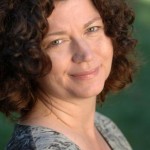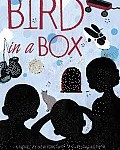 How did you decide to become a writer?
How did you decide to become a writer?
SOC: I had always wanted to be a writer, even before I could write, but it didn’t seem possible to me. I didn’t know any writers; I didn’t know how someone became such a thing. It wasn’t until I took a writing class in college and my professor, the novelist Alan Burns, encouraged me to write, that I finally believed that I could become a writer. Alan Burns told me that I could; he actually told me that I should, and he wouldn’t accept excuses.
Sparrow Road sounds like such an interesting place. Is it modeled from a real home that you know or is it all fictional?
SOC: Sparrow Road is entirely fictional. I have spent time at several artists colonies, as well as a working retreat farm run by some wonderful nuns, and each one of these places is dear to my heart. In a way, they’re all part of Sparrow Road-but as a place-Sparrow Road is its own enchanted world.
Sparrow Road seems to be an anomaly these days when so many of us are connected 24/7. What do you think is the value of spending time away from technology and in quiet reflection?
SOC: Each of the places I mentioned allowed plenty of time for quiet. I remember a kind of fear at the start of each residency: What will I do alone, with no phone or friends or family? But the answer really was just dream. Dream my way into a story. And that’s exactly what I did. The silence allowed me time to day dream, to imagine a story into life, to work the long uninterrupted hours I need to write a book.
Do you see the pursuit of all types of art as being related in some way? If so, how?
SOC: Oh yes, I do. Of course every art form is distinct, as every artist is distinct, but I believe we are all engaged in the power of creation -the desire to make something new-to say something important to the world whether it’s through dance or theatre or film or music or fiction. I keep a Faulkner quote at my desk that says it better than I do: “The aim of every artist is to arrest motion, which is life, by artificial means and hold it fixed so that a hundred years later, when a stranger looks at it, it moves again since it is life.” William Faulkner. For myself, I want the work to move again like life.
Other than writing, are there other types of art you like to create?
SOC: As a creator, I am primarily a writer. As an art lover I take in a lot of theatre, visual art-I’m a great fan of collage, fabric art, cinema and of course music. Other artists inspire me.
What role do you see art having in helping people get through emotionally hard times?
SOC: The act of creating is an act of affirmation; I believe in possibility-and that kind of hope serves us all well in hard times.In the end, art-making can’t happen without faith, and faith is a tremendous gift to any spirit.I have no doubt art can help us heal-can help us work toward resolution, there is something deeply restorative about the act of naming, of identifying or making public, our stories and our losses. I have seen it in my own life and the lives of many others.
There’s a bit of mystery in Sparrow Road too, a bit of it having to do with the home’s former role as an orphanage. How did that layer affect the story you were writing about Raine?
SOC: Well I like a layered story-I want any story to be about three of four important things-maybe more, and the orphanage history inadvertently helps Raine make sense of her own story. We are always borrowing from others to make sense of our own world, and Raine is just like us in that regard. Her empathy for the orphans, her growing understanding of their plight, shine light on her own losses.
How do you think Raine’s imagining of the orphan Lyman helps her deal with the issues in her own life?
SOC: What a wonderful question. These are all wonderful questions. And yes, I do. Lyman is Raine’s own creation, and what we all create-intentional or not-is part of our own psyche. Through Lyman she’s able to consider what it means to be an orphan-and to realize the ways in which she’s not so far from that herself.
Raine learns that people aren’t always the way they seem on the surface. I think it’s difficult in real life for most of us to look beyond our first impressions of people. Do you have any advice about how to resist making snap judgments?
SOC: Strange as this sound, I think reading fiction trains us in that very practice. Fiction requires empathy-and empathy works against judgment. A good book allows us to inhabit the private lives of characters, people often quite unlike ourselves. We learn their hopes and disappointments through their stories, their failures and frustrations, how they love and how they lose the things they love-and often we discover their hearts are not so far from ours.
Do you have anything else to add for readers at Mother Daughter Book Club. com?
SOC: Cross-generational reading is such an incredibly important experience and I applaud everyone who makes the time for it. The kids have sports and music and lessons and homework and video games and computers-but they still need time for stories. Stories are essential to how we learn to live. I cherish the years I spent in my own mother-daughter book club, all the books Mikaela and I read together, tales and characters we still reference. The ritual of the book club made reading seem important-and I remember how closely I listened to Mikaela-how eager I was to hear her thoughts about the book. She’s grown now, but she’s still my first choice as a fellow reader-and one of the best critics of my work.
Enjoy your mother-daughter book club time. It passes all too soon.
Save
 Dini and her best friend Maddie love to watch movies from Bollywood. They memorize lines from songs and know all the situations that can be solved by their favorite actress, Dolly Singh. When Dini’s mom gets a grant to study at a clinic in southern India for two years, Dini is both upset and excited. She’s upset to leave Maddie and her home in Delaware. But she’s also excited that she’ll be closer to Bombay, as all the filmi people call Mumbai. Maybe she’ll even have a chance to meet her screen idol, Dolly!
Dini and her best friend Maddie love to watch movies from Bollywood. They memorize lines from songs and know all the situations that can be solved by their favorite actress, Dolly Singh. When Dini’s mom gets a grant to study at a clinic in southern India for two years, Dini is both upset and excited. She’s upset to leave Maddie and her home in Delaware. But she’s also excited that she’ll be closer to Bombay, as all the filmi people call Mumbai. Maybe she’ll even have a chance to meet her screen idol, Dolly!






